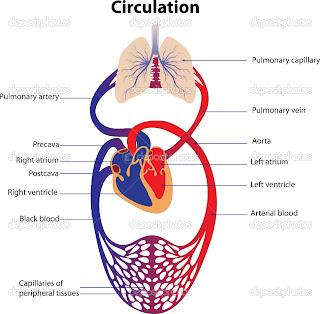The heart and circulatory system which also called the cardiovascular system make up the network that delivers blood to the body's tissues. With each heartbeat, blood is sent all over the body, carrying oxygen and nutrients to all of our cells.
Every day, about 5 liters of blood in your body travel many times through about 60,000 miles of blood vessels, it links the cells to all of the organs systems and body parts. From the heart, to our arteries, to thin capillaries, the cardiovascular system is our body's lifeline.
The circulatory system is composed of the heart and blood vessels, including arteries, veins, and capillaries. Our bodies actually have two circulatory systems: The pulmonary circuit is a short loop from the heart to the lungs and back again, and the systemic circuit that is the system we usually think of as our circulatory system, sends blood from the heart to all the other parts of our bodies and back again. The double circulation of blood is when the blood goes from the heart then to the lungs then back again to the heart and finally circulates all over the body.
http://www.globalclassroom.org/heart2a.jpghttp://ffden-2.phys.uaf.edu/104_2012_web_projects/Danielle_Woodard/intro.html
"TeensHealth." Heart and Circulatory System. N.p., n.d. Web. 30 Apr. 2013. <http://kidshealth.org/teen/your_body/body_basics/heart.html>.
By: Annisha







